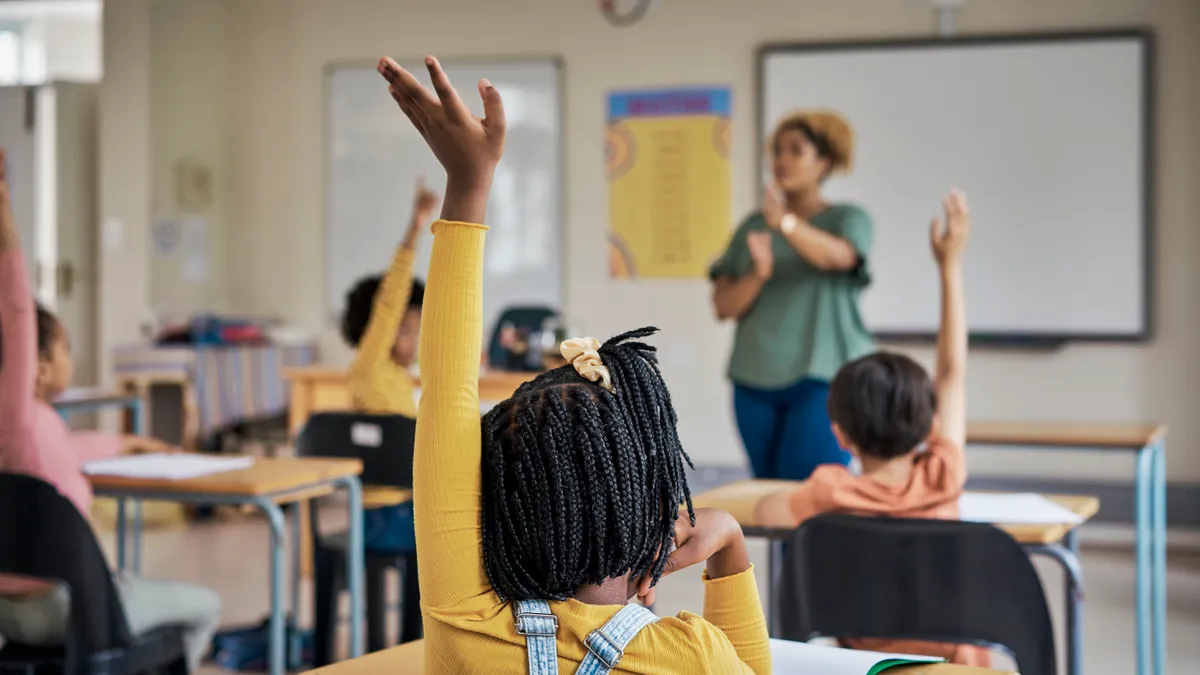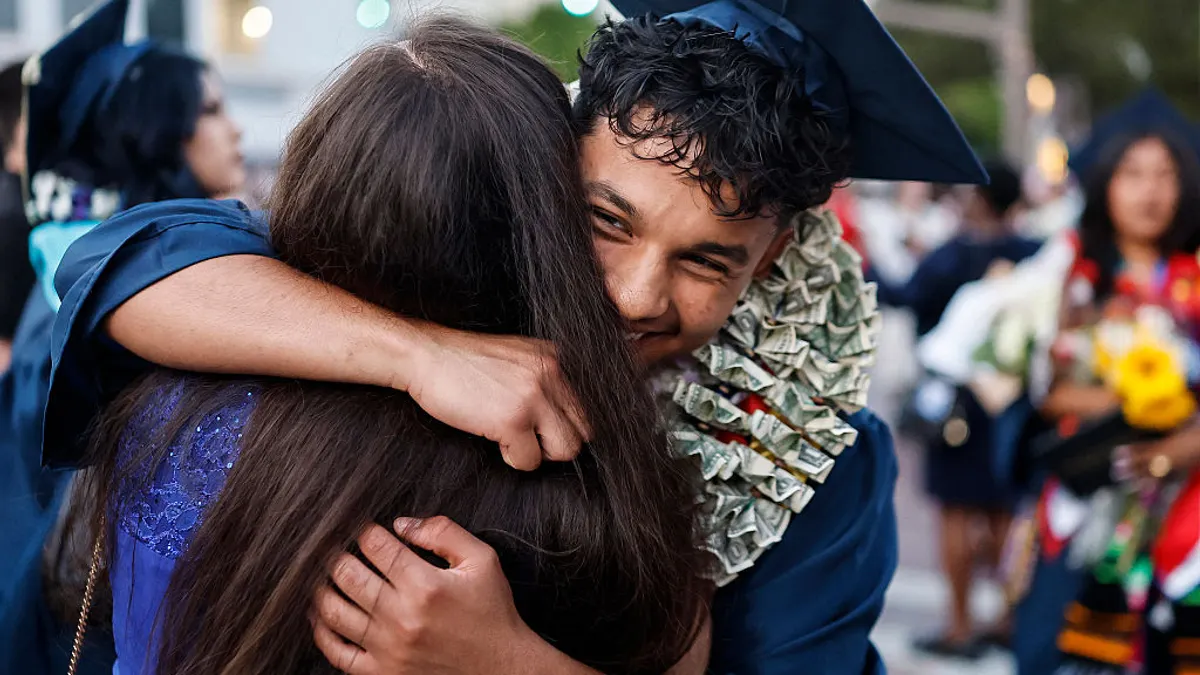Perhaps now more than ever, the superintendency has become a veritable hot seat.
Between 2018-2020 and 2020-2022, turnover for the top job at the nation’s largest school districts spiked 46%. The most recent results from the National Assessment of Educational Progress highlighted how deeply the COVID-19 pandemic impacted learning. Additionally, 2022 saw school shooting incidents reach an unprecedented high.
Still, district leaders nationwide are continuing to rise to the occasion and navigate these hurdles and other demands in innovative ways. Based on their track records, their approaches to top issues facing K-12, and the challenges they face, here are five superintendents to keep an eye on in 2023.
Michael Lubelfeld, North Shore District #112 in Illinois
Going on his fifth year as superintendent of North Shore District #112 in Highland Park, Illinois — and his 13th year leading school districts in the state overall — Michael Lubelfeld has racked up an impressive array of accomplishments during his tenure in the 3,700-student district.
Most recently, in a 2022 ballot referendum, his success in engaging his community helped the district net $114.4 million in bonds for a variety of construction and improvement projects with 72% voter approval.
This past summer, Lubelfeld also took action to engage his school community in discussions on safety and security improvements in school buildings after a gunman killed seven and wounded 48 during a local Independence Day parade in July. Like many districts, his was already on edge from the mass shooting at Robb Elementary School in Uvalde, Texas, barely two months prior.
Alongside engaging with security consultants on a review of hard measures like school locking mechanisms and cameras, Lubelfeld also prioritized increasing the district’s staff of mental health professionals from XX social workers and psychologists to nearly 30. The district also implemented student mental health assessments at the start of the year for the first time to identify risk factors and arrange mental health interventions and treatments for students who need them, Lubelfeld told the Chicago Sun-Times.
Alex Marrero, Denver Public Schools in Colorado
Alex Marrero took the helm at Denver Public Schools in 2021 after a decade of major reforms in Colorado’s largest district.
As Marrero settles into the role, can he reconcile the division these reforms created while building upon the district’s gains from these major changes?
A study released in December by the University of Colorado Denver found the district's significant school choice and accountability reforms between 2008 and 2019 increased the four-year high school graduation rates from 43% in 2008 to 71% in 2019.
The district saw academic gains, too, the study said. Before 2007, Denver Public Schools ranked below the 5th percentile of districts statewide in standardized assessments in both English Language Arts and math. But in 2018-19, the district rose dramatically, to the 60th percentile in ELA and the 63rd percentile in math.
Now, more than half of the nearly 200 DPS schools are “district-authorized charter schools or semi-autonomous innovation schools,” according to the study. Under these reforms, the study found the district created 65 new schools, while 30 others were restarted or replaced.
But the district has since ceased some of those reforms and is now navigating the challenges from quickly opening a large number of schools before the number of school-age children declined in the area, Colorado Public Radio reported.
Amid all these changes, Marrero must also work with a board that has a reputation for being contentious.
Gary Patterson, Uvalde Consolidated Independent School District in Texas
Following the May shooting that took the lives of 19 students and two teachers at Robb Elementary School, many education leaders in Texas’ Uvalde Consolidated Independent School District came under scrutiny and were either fired or resigned. The superintendent at the time of the shooting, Hal Harrell, has since retired.
Filling his shoes as interim superintendent is Gary Patterson, who many are looking to as the community heals and doubles down on its school safety efforts amid a backdrop of intense state and federal debate over school and firearm safety catalyzed by the tragedy.
Patterson has previously served as interim superintendent at six different districts within the span of seven years, leading districts through challenges such as COVID-19. He said, however, that previous obstacles he has led through do not compare to the challenge he is facing in his current position.
"There is no playbook for this," Patterson told ABC News. "There is no curriculum. There is no talking points."
Iranetta Wright, Cincinnati Public Schools in Ohio
Even before stepping into the superintendency at the 36,000-student school district last spring, Iranetta Rayborn Wright outlined a 100-day plan for her transition as head of the fastest-growing large city district in Ohio.
Part of that plan included visiting all 65 school campuses, engaging with 3,500 people, and reviewing feedback from a survey of 1,100 respondents. The input she received helped the district center a focus around getting back to the basics of ABC — academics, behavior and culture.
In academics, the district made some pre-pandemic gains, according to its website, but an undated Ohio Department of Education webpage said Cincinnati Public Schools needs support to meet state standards in academic achievement.
To help raise academic rigor and access, the CPS Board of Education set priorities for student learning over the next three to five years. Those goals include:
- Increasing 3rd grade reading proficiency.
- Closing the 6th grade racial gap in reading proficiency.
- Increasing proficiency for students taking Algebra 1 for the first time on the Ohio State Test.
- Increasing the number of African American, Hispanic and multicultural students graduating with college credits or workforce credentials.
- Increasing the graduation rate.
The district's work to improve behavior and culture is already underway. Wright introduced the Be Present! Initiative last year, which encourages the entire school and local community to become involved in supporting students and helping them succeed.
“We want to galvanize our entire community so that they can provide support and wrap their arms around our students,” Wright told K-12 Dive in August.
One activity under this program — Read 2 Lead — welcomes community residents and businesses to volunteer as literacy tutors during school hours. Another activity titled CPS Moves is offered as a fun way for staff and students to be physically and mentally active through dancing between lessons, jumping rope, mindfulness and more.
The district is also focusing on prioritizing student and staff social-emotional needs, as well as sharing mental health resources with families. Promoting celebrations, respect, learning and recognition of individuals will be core to efforts at building supportive and welcoming cultures.
“Not every parent is comfortable with what we’re doing right now in education," but every adult can understand the benefit of letting students know they are valued and cared about, Wright said.
Verletta White, Roanoke City Public Schools in Virginia
Just as the pandemic began in 2020, Roanoke City Public Schools hired Verletta White to be its superintendent overseeing the 14,000-student district in central Virginia. White previously served as the interim superintendent of Baltimore County Public Schools from 2017 to 2019.
As education leaders juggle the growing politicization of schools, White said in a November interview that she seeks to find commonalities while also discussing “collective pain points” as a superintendent in her community.
“We do have to listen, and we can't just shut out the side that we disagree with or that disagrees with us,” White said.
Specifically in Roanoke City, she said, there is agreement on the need to invest more in Career and Technical Education opportunities for students. Once she found this issue to be a bipartisan topic in her community, it allowed her to further lay the groundwork and create a new equity and action plan for Roanoke City schools. The district is developing a community engagement center, too, she said.
“So we may not agree on every point,” White said. “But when you do, and you can find common ground, then you can be open to some of the other conversations, as well, and the walls kind of come down.”




















